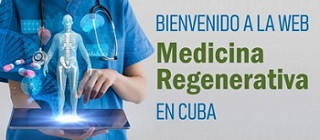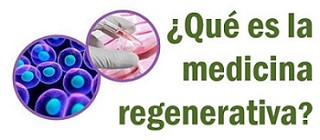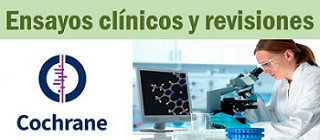Articulo completo a través del HINARI
Cherry AB, Daley GQ.
Stem Cell Transplantation Program, Division of Pediatric Hematology/Oncology, Manton Center for Orphan Disease Research, Howard Hughes Medical Institute, Children’s Hospital Boston and Dana Farber Cancer Institute, Boston, MA 02115, USA.
Abstract
Although development leads unidirectionally toward more restricted cell fates, recent work in cellular reprogramming has proven that one cellular identity can strikingly convert into another, promising countless applications in biomedical research and paving the way for modeling diseases with patient-derived stem cells. To date, there has been little discussion of which disease models are likely to be most informative. Here, we review evidence demonstrating that, because environmental influences and epigenetic signatures are largely erased during reprogramming, patient-specific models of diseases with strong genetic bases and high penetrance are likely to prove most informative in the near term. We also discuss the implications of the new reprogramming paradigm in biomedicine and outline how reprogramming of cell identities is enhancing our understanding of cell differentiation and prospects for cellular therapies and in vivo regeneration.
Copyright © 2012 Elsevier Inc. All rights reserved.
Regenerative Medicine
The explosion of interest in induced pluripotent stem cells has been fueled by their potential as a limitless source of cells to repair damaged tissues in any number of diseases. However, generating cells is only a small part of the problem; ensuring that these cells integrate into their new environment and function appropriately is now a more pressing challenge. In this issue’s Select, we focus on four recent papers that tackle this problem and find that new ways to stimulate endogenous regeneration are providing promising alternatives to restore organ function.
Article Outline
Reprogramming Goes Native in the Heart
Differentiation Drug Reconstructs Cartilage
A Cytokine for Immune Recovery
Restoring Sight
Nenad Bursac
Abstract
The clinical use of stem cells, such as bone marrow-derived and, more recently, resident cardiac stem cells, offers great promise for treatment of myocardial infarction and heart failure. The epicardium-derived cells have also attracted attention for their angiogenic paracrine actions and ability to differentiate into cardiomyocytes and vascular cells when activated during cardiac injury. In a recent study, Chong and colleagues have described a distinct population of epicardium-derived mesenchymal stem cells that reside in a perivascular niche of the heart and have a broad multilineage potential. Exploring the therapeutic capacity of these cells will be an exciting future endeavor.
Dormancy in the stem cell niche
Roberta Sottocornola and Cristina Lo Celso*
*
* Corresponding author: Cristina Lo Celso c.lo-celso@imperial.ac.uk
Author Affiliations
Department of Life Sciences, Division of Cell and Molecular Biology, Imperial College London, Sir Alexander Fleming Building, South Kensington Campus, London, SW7 2AZ, UK
For all author emails, please log on.
Stem Cell Research & Therapy 2012, 3:10 doi:10.1186/scrt101
The electronic version of this article is the complete one and can be found online at: http://stemcellres.com/content/3/2/10
Baiguera, S., Jungebluth, P., Mazzanti, B. and Macchiarini, P. (2012), Mesenchymal stromal cells for tissue-engineered tissue and organ replacements. Transplant International, 25: 369–382. doi: 10.1111/j.1432-2277.2011.01426.x
Summary
Mesenchymal stromal cells (MSCs), a rare heterogeneous subset of pluripotent stromal cells that can be easily isolated from different adult tissues, in vitro expanded and differentiated into multiple lineages, are immune privileged and, more important, display immunomodulatory capacities. Because of this, they are the preferred cell source in tissue-engineered replacements, not only in autogeneic conditions, where they do not evoke any immune response, but especially in the setting of allogeneic organ and tissue replacements. However, more preclinical and clinical studies are requested to completely understand MSC’s immune biology and possible clinical applications. We herein review the immunogenicity and immunomodulatory properties of MSCs, their possible mechanisms and potential clinical use for tissue-engineered organ and tissue replacement.
Orlando, G., Baptista, P., Birchall, M., De Coppi, P., Farney, A., Guimaraes-Souza, N. K., Opara, E., Rogers, J., Seliktar, D., Shapira-Schweitzer, K., Stratta, R. J., Atala, A., Wood, K. J. and Soker, S. (2011), Regenerative medicine as applied to solid organ transplantation: current status and future challenges. Transplant International, 24: 223–232. doi: 10.1111/j.1432-2277.2010.01182.x
Transplant InternationalSummary
In the last two decades, regenerative medicine has shown the potential for “bench-to-bedside” translational research in specific clinical settings. Progress made in cell and stem cell biology, material sciences and tissue engineering enabled researchers to develop cutting-edge technology which has lead to the creation of nonmodular tissue constructs such as skin, bladders, vessels and upper airways. In all cases, autologous cells were seeded on either artificial or natural supporting scaffolds. However, such constructs were implanted without the reconstruction of the vascular supply, and the nutrients and oxygen were supplied by diffusion from adjacent tissues. Engineering of modular organs (namely, organs organized in functioning units referred to as modules and requiring the reconstruction of the vascular supply) is more complex and challenging. Models of functioning hearts and livers have been engineered using “natural tissue” scaffolds and efforts are underway to produce kidneys, pancreata and small intestine. Creation of custom-made bioengineered organs, where the cellular component is exquisitely autologous and have an internal vascular network, will theoretically overcome the two major hurdles in transplantation, namely the shortage of organs and the toxicity deriving from lifelong immunosuppression. This review describes recent advances in the engineering of several key tissues and organs.
Introduction
1. Top of page
2. Abstract
3. Introduction
4. Heart
5. Liver
6. Kidney
7. Pancreas
8. Airways
9. Digestive tract
10. Corneas
11. Immunology
12. Final remarks
13. Funding
14. References
Mark S Freedman, Antonio Uccelli
Mesenchymal stem cells are pluripotent cells that
can be derived and expanded from various tissues
from adults (eg, bone marrow or adipose tissue) or
fetuses (eg, placenta) and can differentiate into cells
of mesodermal origin (eg, bone, cartilage, or fat).
These stem cells possess unique immunomodulatory
properties and can control drug-resistant graftversus-
host disease in people; in animals, they
also seem to limit damage to, or mediate repair
of, CNS tissue via mechanisms other than cell
replacement or transdiff erentiation, probably via
their paracrine function.1 The potential to repair the
CNS or protect it from further damage is precisely
what is being sought as a treatment for progressive
forms of multiple sclerosis (MS). In this issue of
The Lancet Neurology, Peter Connick and colleagues2
assess the effects of a single intravenous dose of
autologous mesenchymal stem cells in the CNS of ten
patients with secondary progressive MS—a disorder
for which there is no proven therapy, despite many
successful agents being used to treat its predecessor,
relapsing-remitting MS.
How to measure repair in MS accurately in the
absence of pathological confi rmation3 has not
been established. Patients who improve after the
overt infl ammatory phase of a relapse and in whom
new lesion formation has stopped might simply
be recovering from these acute events rather than
undergoing active repair. It is also diffi cult to establish
whether lesions on MRI scans are truly improving or
shrinking because of repair or whether they are showing
resolution of infl ammation and oedema. Nevertheless,
evidence of repair with some newer techniques, such
as a change in lesional magnetisation transfer ratio on
MRI, does correlate with histological fi ndings.4 Rather
than looking for signs only of general repair, Connick
and colleagues concentrated on the visual pathway, a
system that can be assessed for structure and function
with validated imaging and neurophysiological
techniques. The investigators chose patients who had
a clear history and objective evidence of optic nerve
involvement due to demyelination, which they refer
to as the sentinel lesion. More importantly, the optic
nerve event was reasonably remote (at least 2 years
from the treatment), such that any acute repair from
the event would have been completed. To ensure
stability, Connick and colleagues assessed patients
several times before treatment, and although two
patients had what might have been an attack of MS,
neither had symptoms or signs involving the anterior
visual pathways.
So far, we have not really been convinced that
any treatment for MS is associated with repair.
Connick and colleagues might be showing the
early signs of this process, somehow mediated by
a single injection of mesenchymal stem cells. They
showed that over the course of 6–10 months after
a single infusion there was recovery of vision that
seemed functional (visual acuity and low contrast
sensitivity), neurophysiological (reduction of the
visual evoked response latency and improved visual
evoked response amplitudes), and structural (increase
in the optic nerve cross-sectional area). What can be
measured in the anterior visual pathway might be an
indicator of a more general process within the CNS,
which is suggested by the reduction in functional
disability (the expanded disability status score) as well
as large, but statistically non-significant, changes in
T1 lesion volume and magnetisation transfer ratio.
However, many measures did not show statistically
significant changes after treatment; particularly
disappointing were the results for optical coherence
tomography, which we all hoped might be a sensitive
index for repair. Nevertheless, this did not detract
from the important findings consistent with CNS
recovery, particularly in the anterior visual system.
Furthermore, there were no serious adverse events in
any patients.
This study is not defi nitive, and Connick and
colleagues have carefully pointed out some of the
caveats of a small non-randomised single-centre
study, such as pretest versus post-test design with no
control group to confi rm that changes after treatment
were directly attributable to treatment rather than
natural history. However, the signs of repair measured
in most of the patients with secondary progressive MS
less than a year after a single infusion of mesenchymal
stem cells raise substantial interest. The hope and
faith of stem-cell research has been to be able to
repair a failing nervous system—with a particular
focus on the use of mesenchymal stem cells.5 Most
investigators agree that these cells have the potential
to repair, but many thought they should fi rst seek to
prove the biological eff ect of modulating immune
responses to reduce infl ammation and explore for
repair signals before leaping into a clinical trial aimed
directly at showing repair.6 Connick and colleagues
have shown us that sometimes it might be better to
leap before looking.
Mark S Freedman, Antonio Uccelli
University of Ottawa Neurology Program, Ottawa, ON, Canada
(MSF); and Department of Neurosciences, Ophthalmology and
Genetics, University of Genoa, Italy (AU)
mfreedman@ottawahospital.on.ca
Articulo a trevés del HINARI
Leukemia Sem Cells
In this issue of Blood, Gerber et al use aldehyde dehydrogenase (ALDH) activity to further subdivide the CD34+CD38− compartment in the bone marrow of acute myeloid leukemia (AML) patients. They identify a unique population with intermediate ALDH activity (ALDHint) that contains leukemia stem cells (LSCs). Moreover, persistence of this population after therapy is a marker of clinically significant minimal residual disease.1
Acceso directo a través del HINARI





